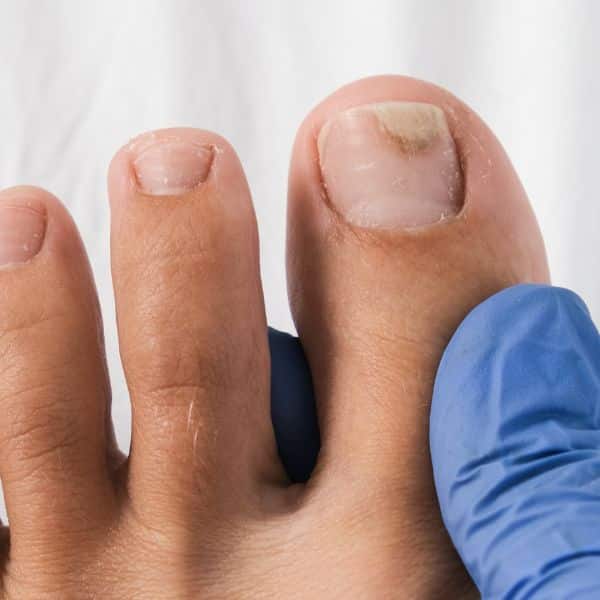Nail discolouration is something many people experience at some point, but it’s not always easy to know what’s causing it. Is it something minor, like a bruise from stubbing your toe, or could it be a sign of a more serious issue? While changes in nail colour might seem harmless at first, they can actually provide important clues about your overall health. Conditions such as fungal infections, trauma, or even underlying illnesses can all manifest in your nails, making it essential to pay attention to any persistent or unusual changes.
Fortunately, many causes of nail discolouration are treatable, especially when caught early. Understanding what different types of discolouration may indicate and knowing when to seek professional help can make all the difference. Whether it’s yellowing, dark spots, or thickened nails, recognising these signs is the first step to maintaining healthy nails and feet.
Common Causes of Nail Discolouration
Nail discolouration can occur for various reasons, ranging from minor injuries to serious health conditions. Understanding the underlying cause is key to determining the right treatment. Below are some of the most common causes of discoloured nails and what they might indicate.
Fungal Infections (Onychomycosis): A prevalent cause of nail discolouration, fungal infections can lead to nails turning yellow, brown, or white. The affected nails may become thickened, brittle, and may separate from the nail bed. Early treatment is crucial to prevent the spread of the infection.
Trauma or Injury: Physical injury to the nail, such as stubbing a toe or wearing ill-fitting shoes, can cause bruising under the nail, leading to a purple, brown, or black appearance. Repeated trauma can result in chronic discolouration and deformity.
Psoriasis: This skin condition can affect the nails, causing them to develop white, yellow, or brown patches. Other signs include pitting (small dents) and separation of the nail from the nail bed.
Bacterial Infections: Infections like green nail syndrome, caused by Pseudomonas aeruginosa, can lead to a greenish discolouration of the nails. This is often associated with prolonged exposure to moist environments.
Melanonychia: Characterized by brown or black stripes running lengthwise on the nail, melanonychia can result from increased melanin production. While often benign, it’s essential to rule out melanoma, a type of skin cancer that can present similarly.
Yellow Nail Syndrome: A rare condition where nails become thickened and yellow. It can be associated with respiratory diseases and lymphedema.
When to See a Podiatrist
If you notice certain changes in your nails, consulting a podiatrist is strongly recommended. Persistent discolouration that does not improve or worsens over time may signal an underlying issue that needs evaluation. Similarly, changes in nail thickness or texture, such as thickening, brittleness, or an unusual surface, could indicate health concerns. Nails that begin to lift or separate from the nail bed should not be ignored, as this can point to more serious problems.
Pain, redness, or swelling around the nail might suggest an infection or another condition that requires medical attention. Additionally, the appearance of dark streaks or spots on your nails, particularly if they change or grow, should be examined without delay to rule out the possibility of melanoma. Recognising these warning signs early can help prevent complications and ensure appropriate treatment.
Early consultation with a podiatrist can lead to timely diagnosis and treatment, preventing potential complications and ensuring better outcomes for your nail health.
If you’re concerned about nail discolouration or have noticed any of the warning signs mentioned, it’s important to seek professional care. Our expert podiatrists are here to provide a thorough assessment and effective treatment tailored to your needs. Don’t wait for the problem to worsen—get in touch with us today or visit our clinic for personalised advice and care to restore your nail health.





